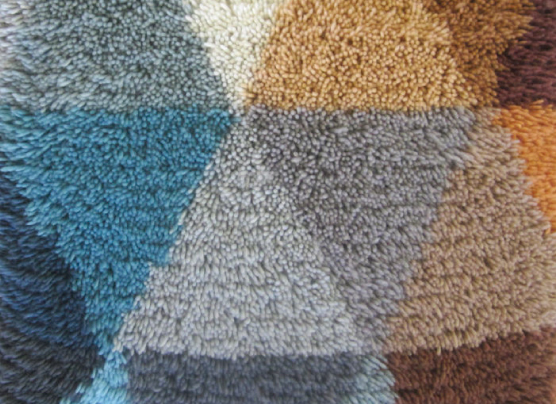

TIMELESS DESIGN SINCE 1879
The Friends of Finnish Handicraft is one of the oldest design organizations in Finland. It was founded in 1879 by the artist Fanny Churberg. One of the most important goals for the newly founded association was to collect traditional textiles, to find new ways to apply the patterns and to revive forgotten textile traditions. An underlying motive was also to raise national awareness by creating an independent Finnish style.

THE FINNISH RYA RUG
The main product of The Friends of Finnish Handicraft is the rya rug. The rya symbolizes the Nordic connections of our country. The Norwegian word ”rye” and the Swedish ”rya” are derived from the ancient Scandinavian word ”ry”, which means a tufted quilt. The same word is found in Ireland in the form of ”ru”. The Friends of Finnish Handicraft produces high quality textiles designed by professional designers. Our core product is the rya rug, but the collection also comprises embroidered cushions. In addition, a customer can also order unique, custom made textiles.

ECOLOGICAL ARTISTIC TEXTILES
Rya rugs are made to last. High quality natural materials are combined with the best handicraft skills available. Our products are ecological: they are produced in Finland using local raw materials. Although our atelier and showroom are located in Ulvila, the rugs are made by skilled weavers all around Finland. The rya rug is a way of preserving our culture representing the best of our national cultural heritage.

DO IT YOURSELF - IT IS FUN AND EASY
You can make a rya rug designed by a well-known textile artist all by yourself. It takes only a few minutes to learn how to make the stitches for the rya rug. Our most sold products are rya rug kits, which contain a base fabric onto which the rya rug is sewn with a help of a tapestry needle and a special ruler. The rya rug can also be weaved in a loom. All the materials needed are contained in the kit as well as clear instructions about blending the different yarn colors into proper color combinations and how to follow the design. When the rya rug is ready, finishing instructions are provided.

THE ORIGINS OF THE RYA RUG
The history of the rya rug goes back in time more than a thousand years to the age of the Vikings. They used rya rugs as covers in their boats. The oldest preserved rya rug is from the end of the 17th century. During that period the nobility and the clergy used rya rugs as quilts. From the coastal area the art of weaving rya rugs spread inland to the wealthy peasants and artisans. The rya rugs were also used in churches during weddings. The heyday of traditional rya rugs began at the end of the 18th century and lasted until the mid-eighteen-hundreds, after which industrialism and mass production took over.


THE WEDDING RYA BRINGS LUCK
At the end of the 18th century, the wedding rya was well established as a part of the wedding ceremony among all social classes. In previous times a bearskin was used instead of a rya. It helped protect both the priest and the bridal couple from dark forces believed to lurk under the church floor. A patterned rya rug demanded a lot of work and was expensive, which is why it was often part of the dowry. The bride and the groom stood on the rya rug during the wedding ceremony, and afterwards the rya rug was used either on the bridal bed or as a decoration during later festivities. A young couple today can order a rya rug for their wedding and then use it in their own home as a tapestry. Most of the designs of our rya rug collection – from Jugend designs to more modern ones – can be used as wedding ryas.